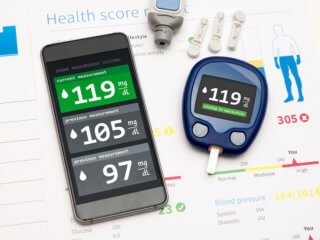People are taking treatment for their diseases from different parts and are combining them at the end. This one costs them more amounts. Meanwhile, medical insurance stands in the middle of them, increasing the cost of hospitalization after that. For this reason, hospitals are becoming networks through telemedicine, where there is no need of consulting much medical personnel and also reducing the cost of admission.
What’s the idea behind telemedicine?
The idea is to decrease health care costs is by encouraging hospitals, doctors, and other health care providers to build networks that coordinate patient care and become eligible for bonuses when they deliver that care more efficiently. These are also named as Accountable Care Organizations (ACOs). Providers make more if they keep their patients healthy. ACOs have become one of the most addressed about new ideas in Obamacare. In Obamacare, each ACO has to manage the health care needs of a minimum of 5,000 medicare recipients for at least three years.
| Recommended for you | |
| Sustainable future hospital planning | |
| 10 Apps for virtual consultations | |
| No more waiting at the doctor: Virtual consultations |
How does it work?
Apart from the conventional health care techniques, Mercy Virtual Care Center have thought somewhat new and putting a step forward in the method of hospitalization. As the doors opened at Mercy’s Virtual Care Center, it became the world’s first facility dedicated entirely to care outside its walls. A 125,000sq-ft building, the Virtual Care Center houses 330 Mercy co-workers, but no patients. “It’s like a hospital without beds,” said Dr. Randy Moore, president of Mercy Virtual. “We have the medical team here, but with technology like highly-sensitive cameras and real-time vital signs, our providers can ‘see’ patients where they are. That may be in one of Mercy’s traditional hospitals, a physician office or in some cases, the patient’s home”. Defined as a “hospital without beds,” the Virtual Care Center is the roof to a large medical team, but no patients. Using sensitive online-enabled instruments, real-time vital signs, two-way cameras, clinicians “see” patients where they are. That may be in one of Mercy’s traditional hospitals, a physician office or in some cases, the patient’s home. Mercy’s Virtual Care Center is also intended to be a workspace for innovations in patient care and product testing. With meeting spaces that possess multiple floor-to-ceiling whiteboards on tracks and large computer monitors, the building encourages collaboration and new ideas for getting care to patients when and where they need it, with less expense. The building’s design indicates Mercy’s values regarding life and care of the environment, with painstaking preservation attempts of the naturally wooded site. The exterior is wrapped in glass to permit views of the nearby pond and trees and features balconies and terraces so co-workers can take breaks outside, anytime day or night. Doctors and hospitals will likely refer patients to hospitals and specialists within the ACO network. But patients are ordinarily still free to see doctors of their choice outside the network without spending extra. Providers who signify part of an ACO are needed to warn their patients, who can decide to go to a different doctor if they are uncomfortable partaking. The patient can decline to have his data shared within the ACO. One difference, experts say, is technology. Electronic Medical Records and a stock of health databases that did not endure during the first wave of managed care can now control appropriate care.
What are the facilities offered?
The new four-story facility in a $54 million construction is the nerve center for Mercy’s existing telemedicine programs, including:
- Mercy SafeWatch which is Launched in 2006, it’s the largest single-hub electronic ICU in the nation. Nurses and doctors monitor patient’s vital signs and implement a second set of eyes to bedside caregivers in 30 ICUs over five states. SafeWatch ICUs have seen a 15% reduction in how long patients wait in the hospital.
- Telestroke: Many community Emergency Rooms (ERs) over the country don’t have a neurologist on-site. With Mercy’s telestroke plan, patients who come to the ER with signs of a stroke can be seen instantly by a neurologist via telemedicine.
- Virtual Hospitalists: A company of doctors is dedicated to seeing patients within the hospital around-the-clock utilizing virtual care technology. They can request needed tests or read results, resulting in quicker care.
- Home Monitoring: Mercy provides continuous monitoring for hundreds of chronically ill patients in their homes after hospitalization.
What is the business model?
It is nothing but the health care organizations planning to act as insurers too to make their patients more comfortable with them. Making the change is the transition from fee-for-service payment plans, which pay for each doctor’s appointment, appendectomy or CT scan independently, to one that gives providers a lump sum per person per year. This will turn more of the financial risk of medical care from insurers to providers. Once hospital systems are paid this way, “they’re halfway toward obtaining an insurance company,” Roades said. “The more hospitals take on risk and control the care, the more they resemble like insurance companies. And finally, you have to ask: Why do we even need an insurance company sitting between a health system and an employer?” Hospitals from Colorado to Virginia are examining similar strategies driven by rising costs and incentives in the health law. An expected 20% of networks vend an insurance product, including MedStar Health, serving the Washington-Baltimore region with Georgetown University Hospital and eight other abilities. Another 20% are searching doing so, according to a study last year of 100 hospital leaders by the Advisory Board Co., which is a research firm. “This trend is picking up steam across the country,” said Chas Roades, the company’s chief research officer. Like other hospital chains beyond the country, it’s under intense pressure from the private and public insurers, as well as employers, to receive flat-rate payments for care, preferably than reimbursements for every service. And that puts a burden on hospitals not just to control costs, but to keep people healthy, in short, to act more like insurers. “This is a massive, dramatic cultural shift,” said Dowling who is president and chief executive of North Shore-LIJ and expects it will take many years to market coverage to the general public. Once the system becomes an insurer, pulling up the tab for a hospitalization rather than making revenue from it, further resources will be devoted to the preventive care, Dowling said. Proponents say consumers would profit from streamlined care and possibly lower costs, but some also bother they could discover themselves with fewer choices and inadequate access to outside experts and cutting-edge treatments.
What advantages does it offer?
This method offers many advantages such as,
- Making sure patients get needed medicines.
- Know which symptoms indicate a worsening condition.
- Provides a number that is available for advice 247.
- Can get into seeing a primary care physician before a crisis develops.
- The team provides complete color-coded maps of the service area that allows it to zero in on regions, even city blocks that are hot spots of diabetes, asthma, hypertension and heart disease.
Key people and partnerships
Mercy’s bright step into a new way of caring for patients is also implicative of its founder, Catherine McAuley. “Catherine and the Sisters of Mercy were named the ‘walking sisters,’ because they went out studying for those who needed their help,” said Lynn Britton, president, and CEO of Mercy. “We’re making the same with this center, but we’re utilizing technology to get our caregivers to the bedside spontaneously. With a decade of telemedicine practice, our Mercy team is once again pioneering a new model of care to enrich the lives of our patients”.
- Mercy named one of the top 5 large U.S. health systems in 2017 by Truven, an IBM Watson Health company, assists millions annually. Mercy includes 43 acute care and specialty (heart, orthopedic children’s and rehab) hospitals, more than 700 physician studies and outpatient facilities, 40,000 co-workers and more than 2,000 Mercy Clinic physicians in Arkansas, Missouri, Kansas, and Oklahoma. Mercy also has outreach ministries in Arkansas, Mississippi, Louisiana, and Texas.
- Michael Dowling, who moves one of New York’s largest hospital networks, is planning to turn his business model on its head. He wants to keep his hospital beds clear. That’s because the North Shore-LIJ Health System, which has 16 hospitals and more than 300 outpatient stations in New York City and Long Island, is setting the foundation to be an insurer, also a provider of health care. The North Shore-LIJ system has opened into various new full-risk agreements with Medicaid and Medicare to handle its neediest patients, who are elderly, poor or both (the two government plans make up the majority of hospital patients).
- Many Washington-area health systems already market plans or self-insure their employees. Besides MedStar, Sentara Health Care, a Norfolk-based health system that owns Sentara Northern Virginia Medical Center in Woodbridge, sells Optima Health, a health plan with 433,000 members. And Inova Health System, a hospital network based in Falls Church, Va., has announced it would partner with Aetna to set a jointly-owned health plan that will sell insurance products in northern Virginia.
- Children’s Hospital is a superior member of Children’s Miracle Network Hospitals, a national nonprofit organization that fundraises for 170 premier children’s hospitals over North America.
Image credit: www.istockphoto.com

















